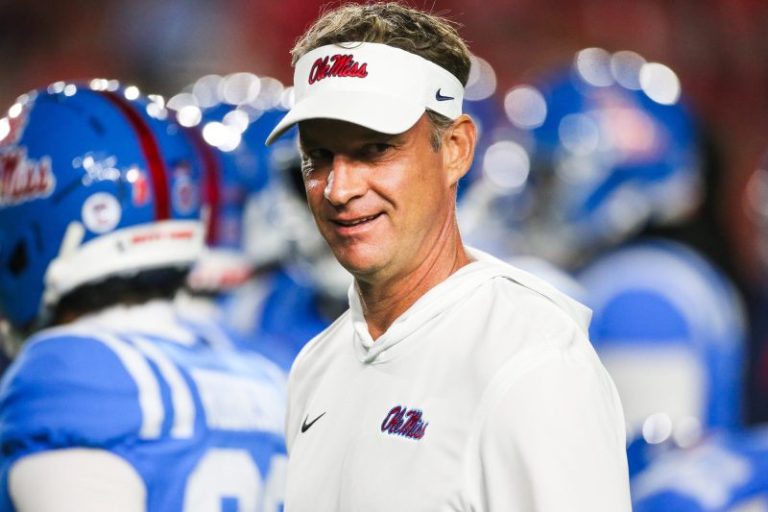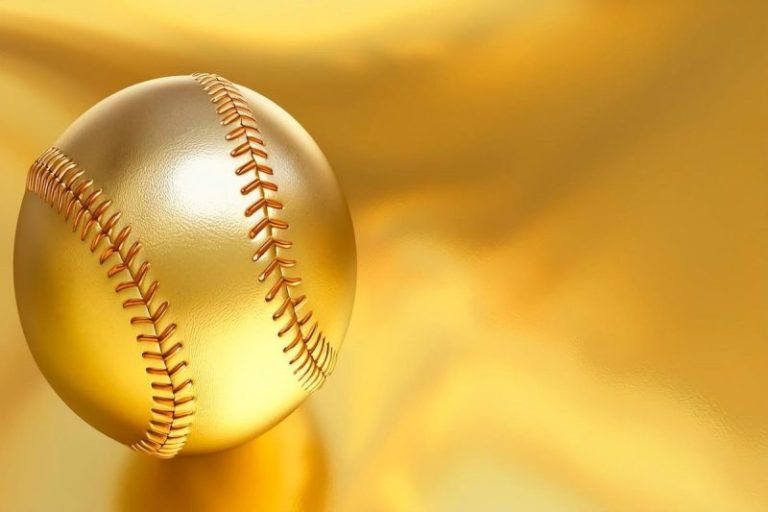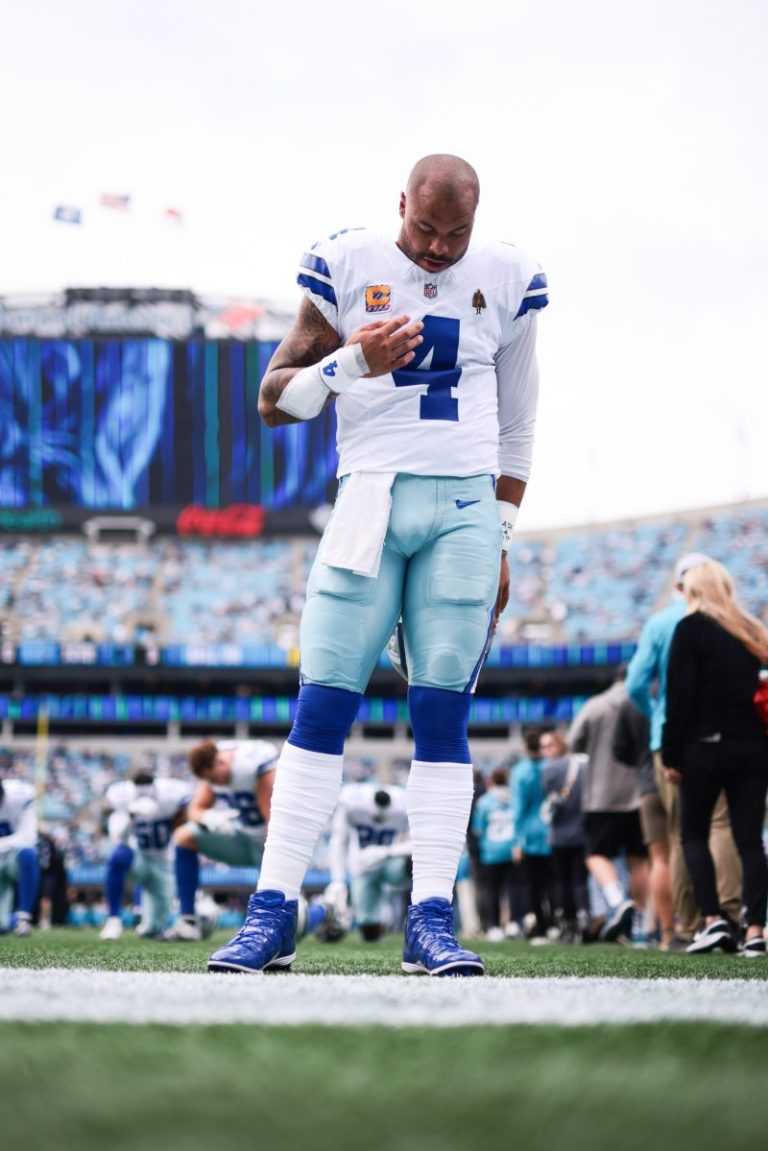Islam Makhachev did more than beat Jack Della Maddalena for the UFC welterweight title at Madison Square Garden in New York on Saturday, Nov. 15.
The 34-year-old Russian also became the 11th UFC fighter to win championships in two divisions, joining the likes of Jon Jones, Amanda Nunes and Conor McGregor.
‘This is a dream,’ Makhachev said during a post-fight interview. ‘All my life for this …’
Vacating his lightweight title, Makhachev moved up 15 pounds to the welterweight division in search of a second championship belt. He got it in dominant fashion.
Della Maddalena is one of the best strikers in the UFC. But it didn’t matter because Makhachev scored repeated takedowns and control almost 20 minutes of 25-minute, five-round fight.
With the victory, Makhachev joined other double champions such as Jon Jones, Amanda Nunez and Conor McGregor.
He also won for 16th straight time, tying Anderson Silva’s record for longest winning streak in UFC history, and improving his record to 28-1 (17-1 UFC).
Della Maddalena, who won the UFC welterweight championship with a victory over Belal Muhammad by unanimous decision May 10, 2025, was making his first title defense.
The loss to Makhachev ended Della Maddalena’s 18-matchup winning streak, which included eight UFC fights. His record dropped to 18-3 (8-1 UFC).
UFC 322 main card results
- Islam Makhachev def. Jack Della Maddalena (Welterweight title): Unanimous decision
- Valentina Shevchenko def. Zhang Weili (Women’s flyweight title): Unanimous decision
- Michael Morales def. Sean Brady (Welterweight): TKO
- Carlos Prates def. Leon Edwards (Welterweight): TKO
- Benoît Saint Denis def. Beneil Dariush (Lightweight): KO
Jack Della Maddalena vs. Islam Makhachev results: Makhachev wins welterweight title
Round 1: Jack Della Maddalena (JDM) chases after Islam Makhachev, then relents. They’re now at the center of the right, maybe Makhachev is willing to strike. No dice. Makhachev takes down JDM and Mahachev looks like a boa constrictor. A boa that can punch. JDM showing no sign of wriggling free and Makhachev is throwing punches to the head. JDM creatively working to is feet, but Makhachev still in control. As good a scrambler as JDM has proven to be, he looks pretty helpless now, especially with the punches coming. 30 seconds left. Can JDM survive the round? He will, but connects with an illegal head kick after the round ends. Makhachev 10, JDM 9.
Round 2: They opened with low leg kicks. Makhachev’s is crisp. Makhachev connects with a head kick. JMD flips over Makhachev into the mat and appears to be in serious trouble. Off his feet, JDM is a sitting duck. Or prone duck. Makhachev comfortably on top and now throwing punches and elbows. Crowd boos, clearly wanting the fighters on their feet. JDM squirming and making no progress as Makhachev periodically punches with his right hand. Now Makhachev pounds JDM’s head with elbows. JDM is back on his feet! Hey, that’s cause for celebration in this fight. Makhachev 20, JDM 18.
Round 3: Fighters circling. JDM throws a couple of punches but looks tentative after the takedowns. Makhachev landed a stinging leg kick, then follows up with some striking. But JDM lands body shots that look effective. Just like that, Makhachev takes down JDM yet again. Boos from the crowd, but Mahachev will pay no attention. JDM looks red and exhausted with Makhachev on top. Makhachev adding insult to injury with short punches. JDM hanging on as the round comes to a close. Makhachev 30, JDM 27.
Round 4: JDM, on a damaged right leg, opens with right-legged kicks. Brave, but advisable? Makhachev responds with a left kick to the body. Makhachev scores yet another takedown. Makhachev almost toying with JDM, who flips in attempt to get away. But Makhachev is ready. JDM is going nowhere. Makhachev has him smothered. JDM clearly in pain as the round ends. Makhachev 40, JDM 36.
Round 5: JDM moving forward and trying to punch. Just like that, Makhachev takes him down again. He looks physically compromised and Makhachev is looking for the submission. But now he settles for some light punches to the head. Three minutes left. Can JDM survive the round? That’s about all the suspense that is left. JDM looks in agony, but it’s over. Makhachev 50, JDM 45.
Valentina Shevchenko def. Zhang Weili by unanimous decision
Vaentina Shevchenko is not unbeatable. But she sure looked it.
Shevchenko dominated Zhang Weili in defending the women’s flyweight title. She also denied Weii’s attempt to become a two-division champion.
Weili vacated her strawweight title to challenge Shevchenko for the flyweight title that would have made Weili the 11th UFC athlete to win titles in two division.
She had no shot.
All three judges scored the five-round fight 50-45 for Shevchenko, who dominated from the outset and controlled much of the fight with takedowns. Even on her feet, Weili was overmatched by the taller and stronger Shevchenko.
Shevchenko, a 37-year-old Russian, improved to 26-4-1 (15-3-1 UFC). Weili, a 36-year-old from China, fell to 26-4 (10-3 UFC).
Valentina Shevchenko vs. Zhang Weili, women’s flyweight
Round 1: Zhang Weili takes a kick from Valentina Shevchenko and lands a right. Shevchenko responded with a left kick partially blocked by Weili. Shevchenko hs a clear height advantage, which will force Weili to get in close. She attempts a takedown and Shevchenko ends up on top. Shevchenko scores with a knee. Now the fighters are up Weili lands a hard shot before Shevchenko pulls Weili to the mat and gets on top. They’re exchanging body shots as Weili gets smothered as the round ends. Shevchenko 10, Weili 9.
Round 2: Weili rushed in and Shevchenko scores with a counter, then takes down Weili down again. She looks to be in total control as Weili covers her face. More than three minutes in the round and Shevchenko is draped over Weili and wearing Weili out. Shevchenko is stymying Weili at every turn. Fans express some dissatisfaction. Weili struggles to get loose and Shevchenko throws punches and then a shoulder. Weili is taking big shots in the face as the round comes to a close. Shevchenko 20, Weili 18.
Round 3: Shevchenko nearly lands a nasty leg kick. Weili tried one of her own. He falls well short and shows how well Shevchenko is using her size to maintain distance. Weili attempts another kick and ends up taking a knee. Weili lands a right but backs away. Shevchenko drills Weili with a knee to the body. Weili looks understandably apprehensive and then gets taken down with 1 ½ minutes left in the round. Total domination. Shevchenko 30, Weili 27.
Round 4: Weili unfurls a kick and get popped in the face. Shevchenko lands a couple of crisp kicks. And he lands more kicks. Weili unable to close the gap while Shevchenko is landing almost at will and then taking down again with about a minute let in the round. Weili looks absolutely helpless as Shevchenko scores with shoulder strikes. Shevchenko 40, Weili 36.
Round 5: Weili shows some aggression and Shevchenko gets her wrapped up and pinned against the fence. The break and four minutes remain. Shevchenko lands a hard leg kick. Weili pushed forward and gets wrapped up yet again. Another takedown for guess who? Shevchenko, of course. Three minutes and counting as Shevchenko controls from the top and landing punches to the head, followed by elbows. Gonna need some Excedrin. Weili on her back, Shevchenko on her feet. And it’s over. Shevchenko 50, Weili 45.
Michael Morales def. Sean Brady by TKO
Michael Morales, a rising star from Ecuador, needed help from a translator during his post-fight interview. But once again his fists did the talking – or screaming – with a three-punch combination that knocked out Sean Brady in the first round of the welterweight bout.
It was reminiscent of his first-round knockout of Gilbert Burns one match ago and a sign that Morales could contend for the welterweight title.
The victory over Brady was decisive and convincing considering Morales was facing the No. 2 ranked contender who was expected to challenge Morales with his grappling skills. But Morales fists kept Brady on the defensive from the start.
Morales battered Brady and cut him near his left eye before the finishing blows.
Morales improved to 19-0 (7-0 UFC). 18-0 (6-0 UFC). Brady fell to 18-2 (8-2 UFC).
Sean Brady vs. Michael Morales, welterweight
Round 1: Michael Morales with a noticeable size advantage. But the stocky Sean Brady showing no fear. Morales throwing lefts without much power. Brady swinging low leg kicks without much vigor. Morales chases, Brady retreats. Brady lands two hard rights and is on the attack. Brady in trouble. He takes another uppercut, but Brady looks stable again. Brady attempts the takedown an takes punches as a result. Brady cut on the side of his left eye. Morales capitalizing on eh reach advantage and drops Brady. It’s over! It’s over! Morales by TKO!
Carlos Prates def. Leon Edwards by TKO
The Fighting Nerds are to be feared. Certainly when one of their leaders, Carlos Prates, is in the ring.
In the second round of the welterweight, Prates blasted Leon Edwards with a left hand that lifted Edwards off of his feet and sent him tumbling on his back.
Soon after the referee halted the fight, at 1:28 of the second round.
Afterward, Prates put on a set of horn-rimmed glasses with white tape down the middle and flashed a giant smile.
There were fewer smiles in the first round when Edwards pinned Prates against the fence and drilled him with a knee to the chin. Prates barely reacted.
He came out aggressive in the second round and Edwards seemed to know what was coming before the TKO punch. He raised his right fist for protection, but Prates still blasted the left hand through for the finishing punch.
Prates, the 32-year-old Brazilian, improved to 23-7 (6-1 UFC). Edwards, the 34-year-old Jamaican and former welterweight champion, fell to 22-6 (14-5 UFC).
Leon Edwards vs. Carlos Prates, welterweight
Round 1: Leon Edwards and Carlos Prates exchange leg kicks, then exchange punches. Edwards attempts a takedown but Prater handles it well as the fighters find themselves in a clinch on the fence. Prates jawing at Edwards and Edwards answers with a left knee to the head. Crowd booing. Ref breaks them up and crowd cheers. Prates lands knee to body and Edwards knocks him off balance with kick and he scores a takedown. Edwards riding Prates back and throwing punches into Prates’ face. Prates calmly taking it. Edwards then takes Prates down to the mat and has him in a chole as final seconds elapse. Edwards 10, Prates 9.
Round 2: They fighters exchange leg kicks and appear to be measuring. Prates lands a left, then a low leg kick. Prates landing now. Then he drops Edwards and it’s over!!! Prates by TKO!!
Benoit Saint-Denis def. Beneil Dariush by KO
Sixteen seconds. That’s how long this lightweight fight lasted, and it was memorable.
Literally seconds after it began, Beneil Dariush knocked Benoît Saint-Denis to the mat with a left leg kick. Moments later, Saint-Denis clubbed Dariush with a left hand followed with another punch after Dariush hit the mat.
The bout, fought at 157.2-pound catchweight, had come to a stunning end.
Saint-Denis, a 29-year-oldl from France, improved to 16-3 (8-3 UFC). Dariush, a 36-year-old born in Iran, fell to 23-7-1 (17-7-1 UFC)
Beneil Dariush vs. Benoît Saint-Denis, catchweight (157.2 pounds)
Round 1: Beneil Dariush knocks Benoît Saint-Denis to the mat with a left leg kick. And, wow, what a turnaround. Saint-Denis clubs Daruish with a left and it’s ober. Knockout victory for Saint-Denis!
UFC 322: Time, PPV, streaming for Makhachev vs Della Maddalena
The highly anticipated fight between Islam Makhachev and Jack Della Maddalena will take place on Saturday, Nov. 15 and can be purchased on ESPN+ PPV.
- Date: Saturday, Nov. 15
- Location: Madison Square Garden (New York)
- Early Prelims start time: 6 p.m. ET
- Early Prelims card TV: FX; Prelims stream: ESPN+, Disney+
- Prelims card start time: 8 p.m. ET
- Prelims card TV: ESPNEWS/FX; Prelims stream: ESPN+, Disney+
- Main card start time: 10 p.m. ET
- Main card stream: ESPN+ PPV
Catch UFC action with an ESPN+ subscription
Bo Nickal def. Rodolfo Vieira by KO
Bo Nickal pounded Rodolfo Veiera with lefts through the middleweight fight, but ended it with something far more devastating.
Nickal knocked out Vieira with a head kick, his left leg chopping down Vieira with 2:36 left in the fight. Then he climbed into the top of the Octagon fence and flipped off the crowd, which had booed earlier in the round when the action slowed.
‘Either love me or hate me,’ Nickal said during a postfight interview. ‘Pick one.’
It was mostly a lovefest, with Nickal prompted chants of “U-S-A! U-S-A!’’ as quickly pinned Vieira on the fence and attacked with his fists.
By the second round, Vieira’s face was covered with blood. And by the third round, it was desperation time when Nickal landed the knockout head kick.
Nickal, a 29-year-old from Colorado, improved to 8-1 (5-1 UFC). Vieira, a 36-year-old from Brazil, fell to 11-4 (6-4 UFC).
Gregory Rodrigues def. Roman Kopylov by unanimous decision
Gregory Rodrigues (a.k.a Robocop) looked like a bodybuilder who stumbled into a UFC event. The muscled Brazilian mostly dominated the less fit and less dangerous Roman Kopylov while winning their middleweight fight by unanimous decision.
Rodrigues came out firing his right hand and whipping his right leg, as Kopylov looked determined, if unsuccessful, to stay out of harm’s way.
It was more of the same in the second round, as Rodrigues bloodied Kopylov.
In the third round, Kopylov cracked Rodrigues with a hard left and showed fight. But it was too late to reverse the outcome.
The judges scored it 30-27, 30-27, 29-98 in favor of Rodrigues, who at one pointed prompted cheers of “Robo-cop! Robo-cop!’’
Rodrigues, the 33-year-old Brazilian, improved his record to 18-6 (9-3 UFC). Kopylov, the 34-year-old Russian, fell to 14-5 (6-5 UFC).
Erin Blanchfield def Tracy Cortez by submission
Firing punches from the outset, Tracy Cortez proved dangerous on her feet. So Erin Blanchfield responded wisely and took the fight to the mat.
Blanchfield scored two takedowns in the second round and won by submission with a chokehold with 16 seconds left in the round of the women’s flyweight fight.
It was a rematch of their 2019, when Cortez won by split decision. She looked strong early. But Cortez was bleeding by the right eye in the second round, and as Cortez tired and Blanchfield took control.
Blanchfield, a 29-year-old from New Jersey, improved to 14-2 (8-1 UFC). Cortez, a 31-year-old from Phoenix, Arizona, dropped to 12-3 (6-2 UFC)
Ethyn Ewing def. Malcolm Wellmaker by unanimous decision
Ewing took the fight on 48 hours notice after Cody Haddon withdrew with an injury and he looked like he’d been preparing for weeks. In his UFC debut, Ewing subdued the previously undefeated Malcolm Wellmaker with punches, kicks and a couple timely takedowns in their featherweight fight.
The judges scored it 30-27, 29-28 and 29-28 for the poised Ewing of Yorba Linda, California.
‘You know what they say, the sword is deadliest in calm hands,’ Ewing said.
In the first round, 5-foot-10 Wellmaker staggered the 5-6 Ewing with a hard right. But he failed to capitalize on the moment or on his height advantage, as Ewing fought back with his fists.
Wellmaker scored, but many of his punches were off the mark. Ewing, however, scored with more accuracy and power.
Ewing improved to 9-1 (1-0 UFC) and Wellmaker fell to 10-1 (2-1 UFC).
UFC 322 fight results: Early prelims
- Kyle Daukaus def. Gerald Meerschaert (1st round — submission/D’arce choke), middleweight
- Pat Sabatini def. Chepe Mariscal (unanimous decision): Featherweight
- Fatima Kline def. Angela Hill(unanimous decision): Women’s Strawweight
- Baisangur Susurkaev def. Eric McConico (Round 3 – KO): Middleweight
- Matheus Camilo def. Viacheslav Borshchev (unanimous decision): Lightweight
UFC 322: Della Maddalena vs. Makhachev predictions
BetMGM: Islam Makhachev
Anatoly Pimentel writes: ‘A submission victory for Makhachev over Della Maddalena is my prediction for this fight because his wrestling skills are far superior and currently unstoppable. Furthermore, he won’t be stressing about weight cutting since he’ll move up in the welterweight division.
There’s no doubt that Della Maddalena has improved a lot in his grappling skills. With the help of Craig Jones and Alexander Volkanovski in his camp, he’ll still be able to improve them even more, but Makhachev’s wrestling and grappling are on another level.’
UFC.com: Islam Makhachev
Tim Finnegan of DraftKings writes: ‘Ultimately, Makhachev’s offensive grappling will probably be too much for Della Maddalena to handle, even with Craig Jones in his corner. Della Maddalena has been taken down 10 times in his last two fights by fighters who have inferior wrestling to Makhachev. Look for Makhachev to get this fight to the ground and cover the -5.5 point spread with a finish or a comfortable decision win.’
MMA Mania: Della Maddalena
Tim Bissell writes: ‘Della Maddalena lands 6.84 significant strikes a minute with 52% accuracy. That’s a ton of volume. More impressively, though, he has 64% defense against sig. strikes. This means he isn’t taking one to land one, like lots of guys with high volume stats. He’s landing punches in bunches and not getting countered. And he’s countering when opponents come forward to cut off their attempts to land big shots and combos.’
UFC 322 odds: Della Maddalena vs. Makhachev fight
Odds via BetMGM as of Thursday.
- Jack Della Maddalena (+220) vs. Islam Makhachev (-275): Welterweight title
UFC 322: Della Maddalena vs. Makhachev fight card
Fight card according to ESPN: Odds via BetMGM.
(Odds as of Thursday)
Main Card:
- Jack Della Maddalena vs. Islam Makhachev: Welterweight title
- Valentina Shevchenko vs. Zhang Weili: Women’s flyweight title
- Sean Brady vs. Michael Morales: Welterweight
- Leon Edwards vs. Carlos Prates: Welterweight
- Beneil Dariush vs. Benoit Saint Denis: Lightweight
Prelims:
- Bo Nickal vs. Rodolfo Vieira: Middleweight
- Roman Kopylov vs. Gregory Rodrigues: Middleweight
- Erin Blanchfieldvs. Tracy Cortez: Women’s flyweight
- Malcolm Wellmaker vs. Cody Haddon: Batamweight
Early Prelims
- Kyle Daukaus vs. Gerald Meerschaert: Middleweight
- Pat Sabatini vs. Chepe Mariscal: Featherweight
- Angela Hillvs. Fatima Kline: Women’s Strawweight
- Baisangur Susurkaev vs. Eric McConico: Middleweight
- Viacheslav Borshchev vs. Matheus Camilo: Lightweight
UFC 322 preliminary and main card start times
Here are your start times.
- Early Prelims: 6 p.m. ET (FX, ESPN+, Disney+)
- Prelims: 8 p.m. ET (ESPNEWS, FX, ESPN+, Disney+)
- Main card: 10 p.m. ET (PPV on ESPN+)
UFC 322: Della Maddalena vs. Makhachev full card odds
Fight card according to ESPN: Odds via BetMGM.
Main Card:
- Jack Della Maddalena (+220) vs. Islam Makhachev (-275): Welterweight title
- Valentina Shevchenko (-135) vs. Zhang Weili (+110): Women’s flyweight title
- Sean Brady (-145) vs. Michael Morales (+120): Welterweight
- Leon Edwards (+165) vs. Carlos Prates (-200): Welterweight
- Beneil Dariush (+165) vs. Benoit Saint Denis (-200): Lightweight
Prelims:
- Bo Nickal (-225) vs. Rodolfo Vieira (+185): Middleweight
- Roman Kopylov (+140) vs. Gregory Rodrigues (-170): Middleweight
- Erin Blanchfield (-250) vs. Tracy Cortez (+200): Women’s flyweight
- Malcolm Wellmaker (-165) vs. Cody Haddon (+135): Batamweight
Early Prelims
- Kyle Daukaus (-400) vs. Gerald Meerschaert(+310): Middleweight
- Pat Sabatini (+135) vs. Chepe Mariscal (+110): Featherweight
- Angela Hill (+375) vs. Fatima Kline (-500): Women’s Strawweight
- Baisangur Susurkaev vs. Eric McConico: Middleweight
Ring walk time for Makhachev vs. Della Maddalena main event
The Jack Della Maddalena vs. Islam Makhachev fight card consists of 13 fights and will begin at 6 p.m. ET on Saturday, November 15, 2025, with early prelim fights. The main event for the Maddalena and Makhachev fight is expected to be around 11:30 p.m. ET. However, the duration of the undercard will impact when Maddalena and Makhachev actually start. — Elizabeth Flores
Who did Islam Makhachev lose to?
Islam Makhachev has just one loss in 28 fights. He lost to Adrian Martins by KO in an October 2015 fight in UFC 192.
Jack Della Maddelena’s last fight
Jack Della Maddalena last fought in UFC 315 back in May of this year. He beat Belal Muhammad by unanimous decision for the UFC Welterweight Championship.
Islam Makhachev walkout song
Islam Makhachev typically favors the song ‘Dreams’ by DJ Nariman Ajikalov.
Where is UFC 322: Makhachev vs. Della Maddalena?
UFC 322: Makhachev vs. Della Maddalena will be held at the iconic Madison Square Garden in New York on Saturday, Nov. 15, 2025.
UFC 322 live stream
The Makhachev vs. Della Maddalena prelims and early prelims fights will be available to stream on ESPN+ and Disney+, while the main card will be streamed on ESPN Pay-Per-View.
UFC 322 price
UFC events are available to ESPN+ subscribers. The cost of the service is $10.99 a month or $109.99 for the year. The PPV is available for an additional $79.99.
Islam Makhachev vs. Jack Della Maddalena: Tale of the tape
This post appeared first on USA TODAY










